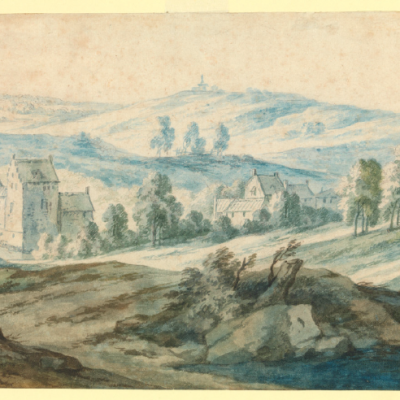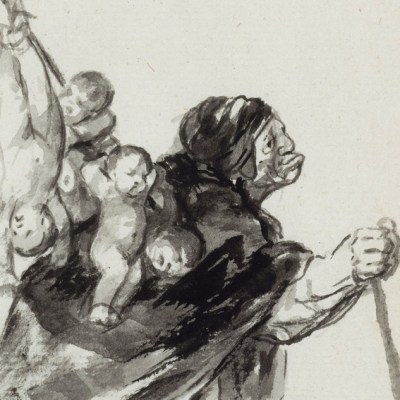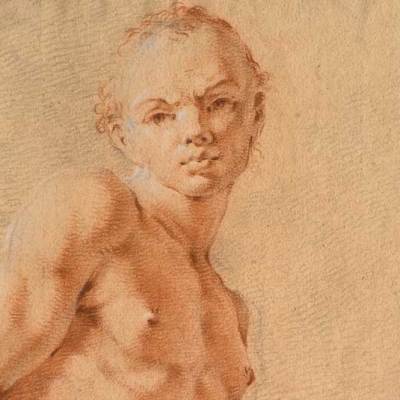The world of drawings is one where the connoisseur is still alive and well. Paris’s Salon du Dessin, which runs from 30 March–4 April, is the spiritual home of drawing devotees, attracting some of the world’s most important collectors and museum curators. They form an orderly queue outside the Palais Brongniart in the Place de la Bourse, chatting among themselves. ‘One can actually feel their enthusiasm,’ says Iana Kobeleva of Aktis Gallery about the Salon’s clientele. Fairs like the Salon, which are dedicated to a collecting niche, are known for promoting stable values over meteoric price rises, and act as meeting grounds for like-minded enthusiasts.
La Baignoire (1942), Pierre Bonnard. Art Cuéllar-Nathan
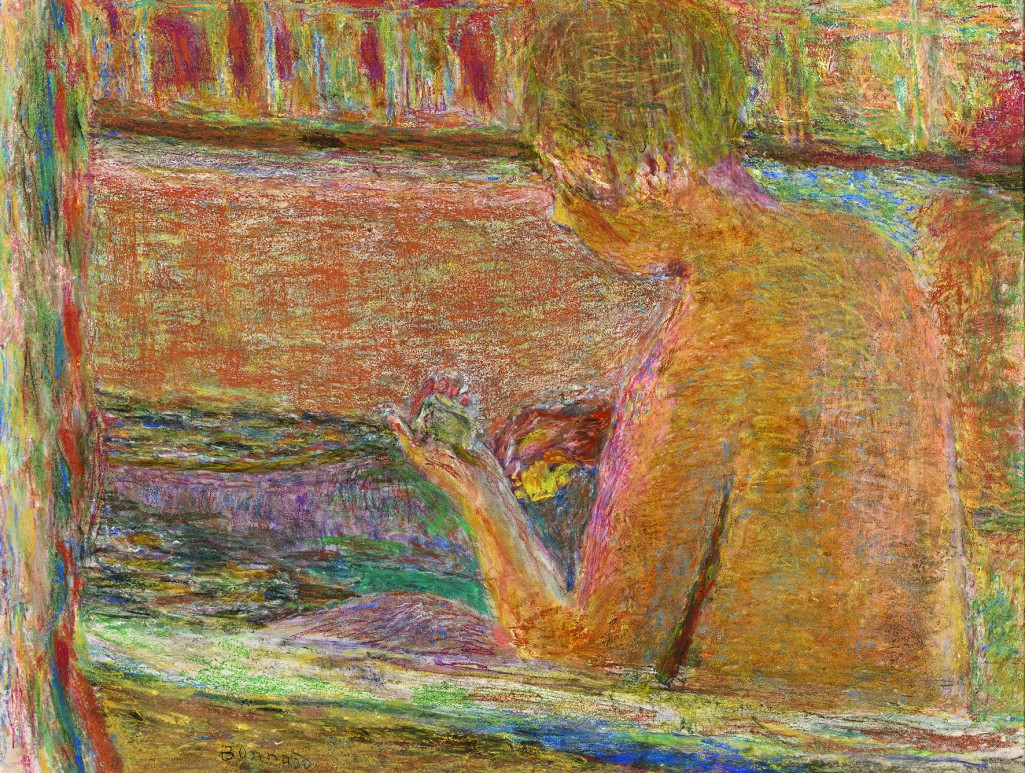
When the Salon du Dessin was formed by a group of nine dealers in 1991, it was the first fair dedicated to the quiet appeal of the drawn line. Paris and London are at the centre of the market for drawings; while London is renowned for its curatorial expertise, nowhere rivals Paris for being home to such a concentration of passionate collectors. This year, under the chairmanship of Parisian dealer Louis de Bayser, the Salon celebrates its 25th anniversary and continues to be the highlight of Drawing Week, which emerged out of the fair some 17 years ago and extends across the city. During this week-long celebration, and in an attempt to link the market with institutions throughout the capital, a huge range of auctions and commercial exhibitions are staged, with the museums of Greater Paris also hosting related events.
The fair’s academic approach is clear in its annual symposium, which this year takes as its theme ‘From David to Delacroix’. Running from 30–31 March and organised by Pierre Rosenberg and Louis-Antoine Prat, the event revisits the Grand Palais’ seminal 1974–75 exhibition ‘From David to Delacroix: French Painting from 1774 to 1830’, and its accompanying drawings show. In conjunction, some museums, including the Bibliothèque nationale de France, offer small group visits to their graphics departments to show works that span the same period covered in this symposium.
Allegory of Time (Vanitas) (1639–40), Salvator Rosa. Pandora Old Masters
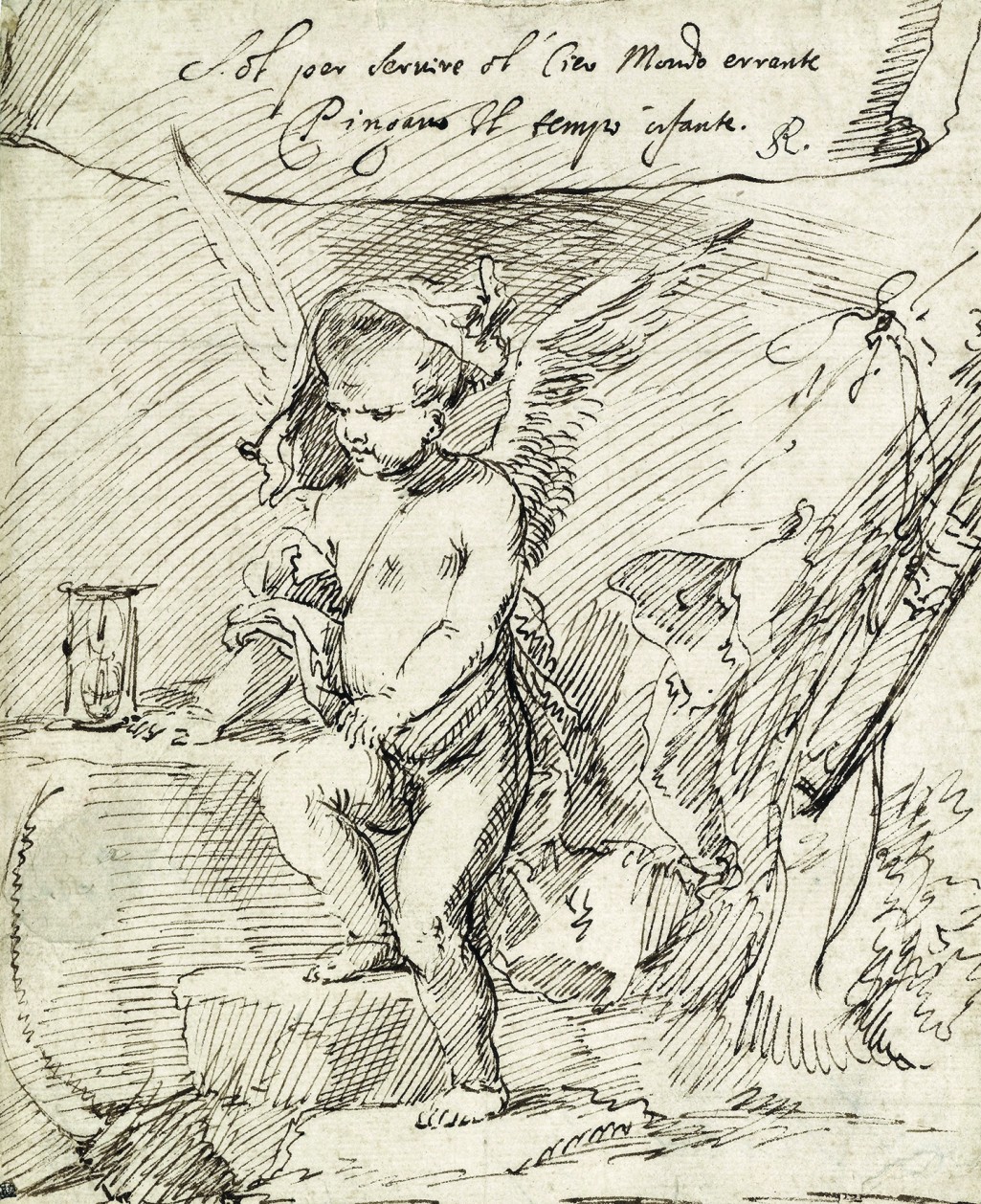
Originally the Salon’s visitors were almost entirely French; reflecting this, tastes favoured Old Master drawings of French interest. Today, the events bring an influx of curators and collectors from across the US and Europe. As the audience has diversified, so has the Salon’s offering – it now embraces a mix of Old Master drawings through to contemporary works on paper; although French Old Master, and 19th- and 20th-century pieces remain its core. As firm proof of the fair’s intention to foster contemporary creative practice, for the ninth year the Daniel and Florence Guerlain Foundation will award a contemporary drawing prize. And, for the first time, the Salon’s guest of honour is a foreign museum: Moscow’s Pushkin State Museum of Fine Arts will exhibit 26 Russian and European drawings from its collection.
With some 40 exhibitors, the Salon presents a vast amount yet remains manageable in scale. Athough still a growing sector at this fair, the modern and contemporary holdings are bolstered by four significant newcomers: Hélène Bailly Gallery and Galerie Jacques Elbaz from Paris; Éric Gillis Fine Art from Brussels; and Munich-based Martin Graessle Kunsthandel.
Last year, London gallery Marlborough Fine Art exhibited at the Salon for the first time with the work of the French-Israeli artist, Avigdor Arikha (1929–2010) – one of only two galleries to offer a solo-artist presentation. ‘The fair has a relaxed atmosphere, in contrast to say Art Basel or even TEFAF, but the clients I met were serious and knowledgeable,’ says Marlborough’s Will Wright. This year, the gallery is bringing a mix of works on paper by established artists that they have represented over the past 70 years, including Frank Auerbach, Paula Rego, and Catherine Goodman.
Sick of it all (2013), Paula Rego. Marlborough Fine Art
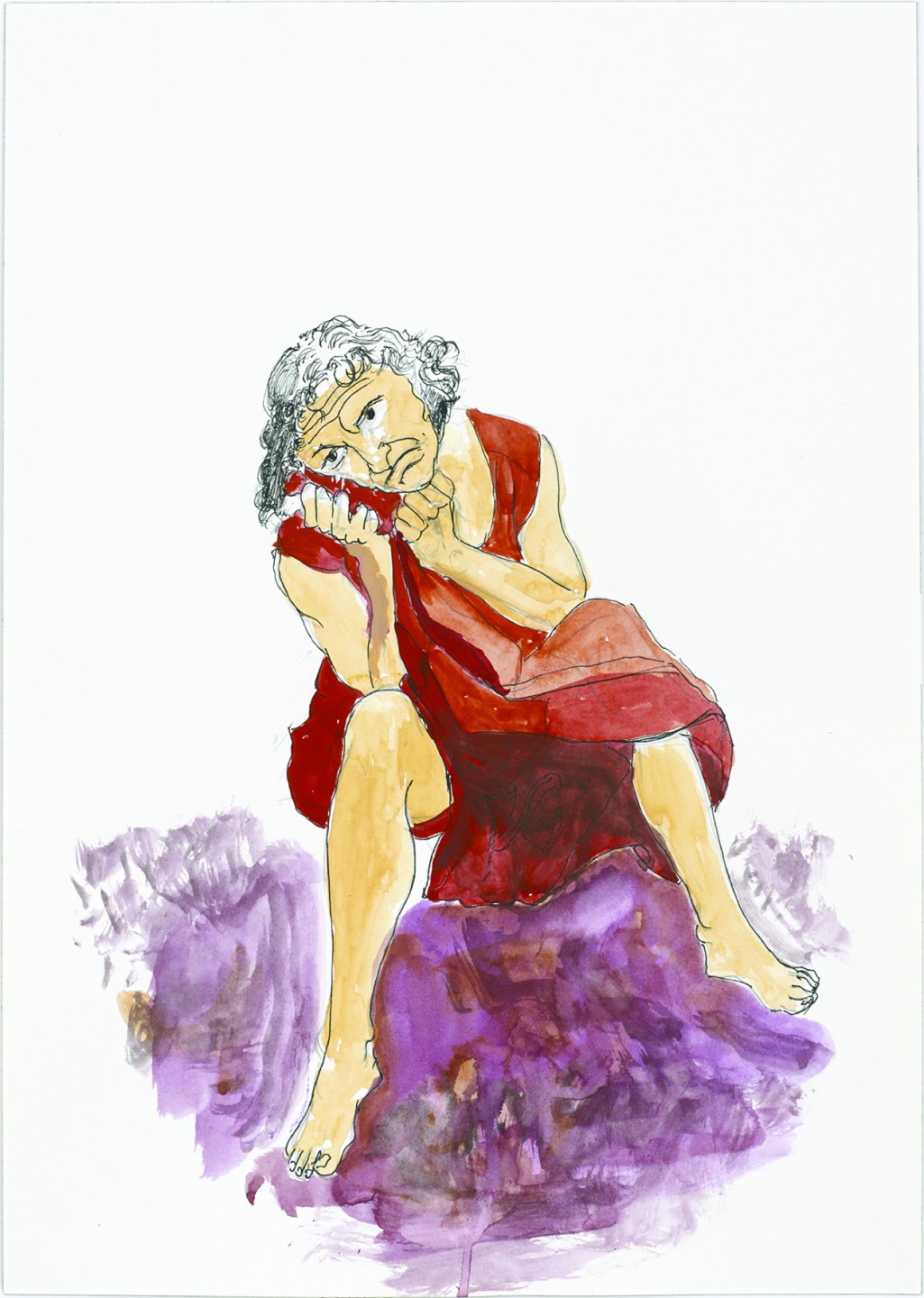
Among the works by Rego is Sick of it all (2013), a pen and watercolour piece from her Stone Soup series, based, like so many of the artist’s works, on a Portuguese folk tale. In Stone Soup, the daughter of a crippled fisherman, struggling to find food for her starving family, sets up a cooking pot in the middle of the village and starts boiling a stone to make stone soup. Intrigued villagers contribute ingredients, and so her family is fed. The participation of galleries such as Marlborough, showing entirely post-war and contemporary works, is indicative of the Salon’s broader audience today.
In response to such diversification, London dealer Stephen Ongpin has adjusted the works that he shows accordingly. Like several other exhibitors, he comes to the Salon directly from TEFAF Maastricht. ‘I don’t think the Salon would work anywhere but Paris, as there are so many passionate, knowledgeable collectors in the city. TEFAF tastes are more geared towards Impressionist and modern works, with the exception of Dutch and Flemish Old Masters. I keep back the Old Masters of French interest for the Salon, and show fewer 19th and 20th century works. But now there is much more interest in Italian and German artists.’
Ongpin’s stand will feature Gustave Courbet’s deft Study of a Seated Man Asleep Against a Table, a black chalk sketch on blue-grey paper. Although not fond of drawing, between 1845 and 1855 Courbet produced many works on paper; in the 1850s he became interested in making observational drawings of figures. As Ongpin points out, the pose in this study is markedly similar to that in Goya’s etching The Sleep of Reason Produces Monsters from the Los Caprichos series (1797–99), albeit in reverse. Depictions of people sleeping or resting are a recurrent theme throughout Courbet’s work, just as bathing women are favoured in Pierre Bonnard’s later career.
Typical of Bonnard’s approach to the subject, La Baignoire (1942) will take pride of place at the booth of Swiss gallery Art Cuéllar-Nathan. This luminous gouache worked over in pastels is an exercise in subtle tonal transitions – as much a study of the intimate, domestic setting as it is the figure.
A Young Man Leaning on a Stick, Turned to the Left (c. 1628–29), Rembrandt van Rijn. W.M. Brady & Co.
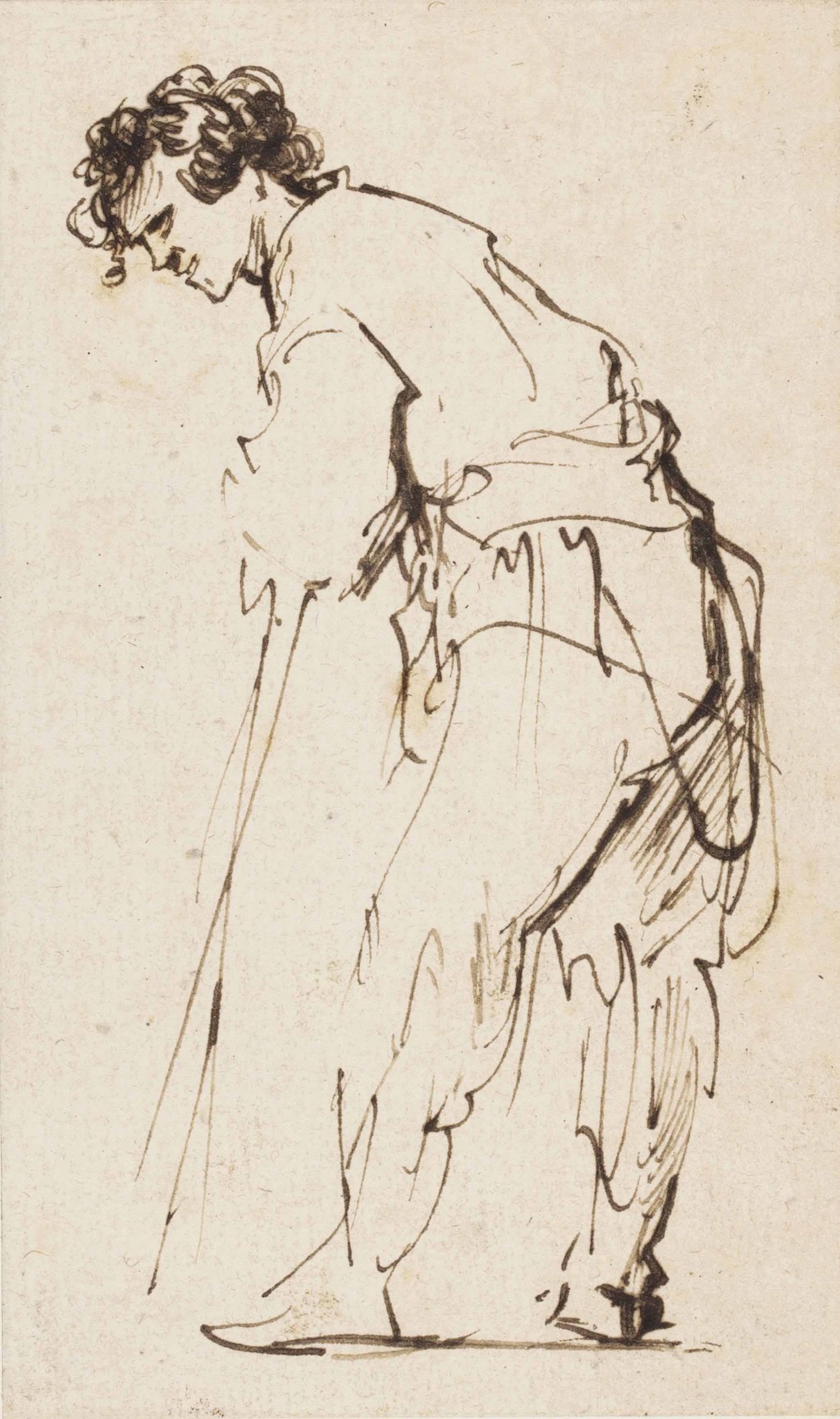
Returning to the Salon’s traditional heart, the Old Master specialists again reveal early gems, from compositional studies for frescoes by the likes of Paolo Farinati, to the rapid lines of figure studies such as Rembrandt’s A Young Man Leaning on a Stick, Turned to the Left at W.M. Brady & Co. Pandora Old Masters from New York, meanwhile, offers Allegory of Time (Vanitas), a fluent pen and brown ink sketch by the 17th-century Italian baroque painter Salvator Rosa. This impish work was executed between 1639–40 to illustrate a small poem by the unconventional artist, which is written in Rosa’s own hand in the cartouche at the top of the sheet. The drawing was recently included in ‘The Young Salvator Rosa’ exhibition at the Museo Correale di Terranova in Sorrento.
The subtle and the bold, the playful and the earnest, the affordable and the aspirational: such breadth defines the Salon du Dessin and its committed cohort of paper addicts.
Salon du Dessin runs at the Palais Brongniart, Place de la Bourse, Paris, from 30 March–4 April.
From the March issue of Apollo: preview and subscribe here.

